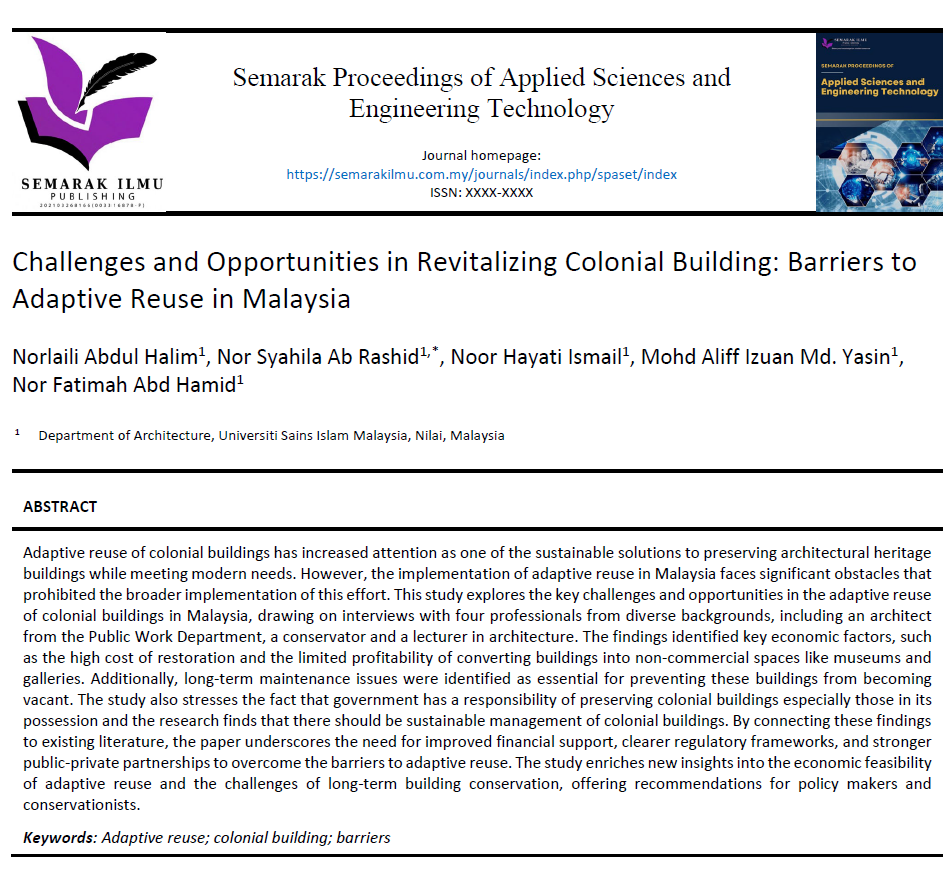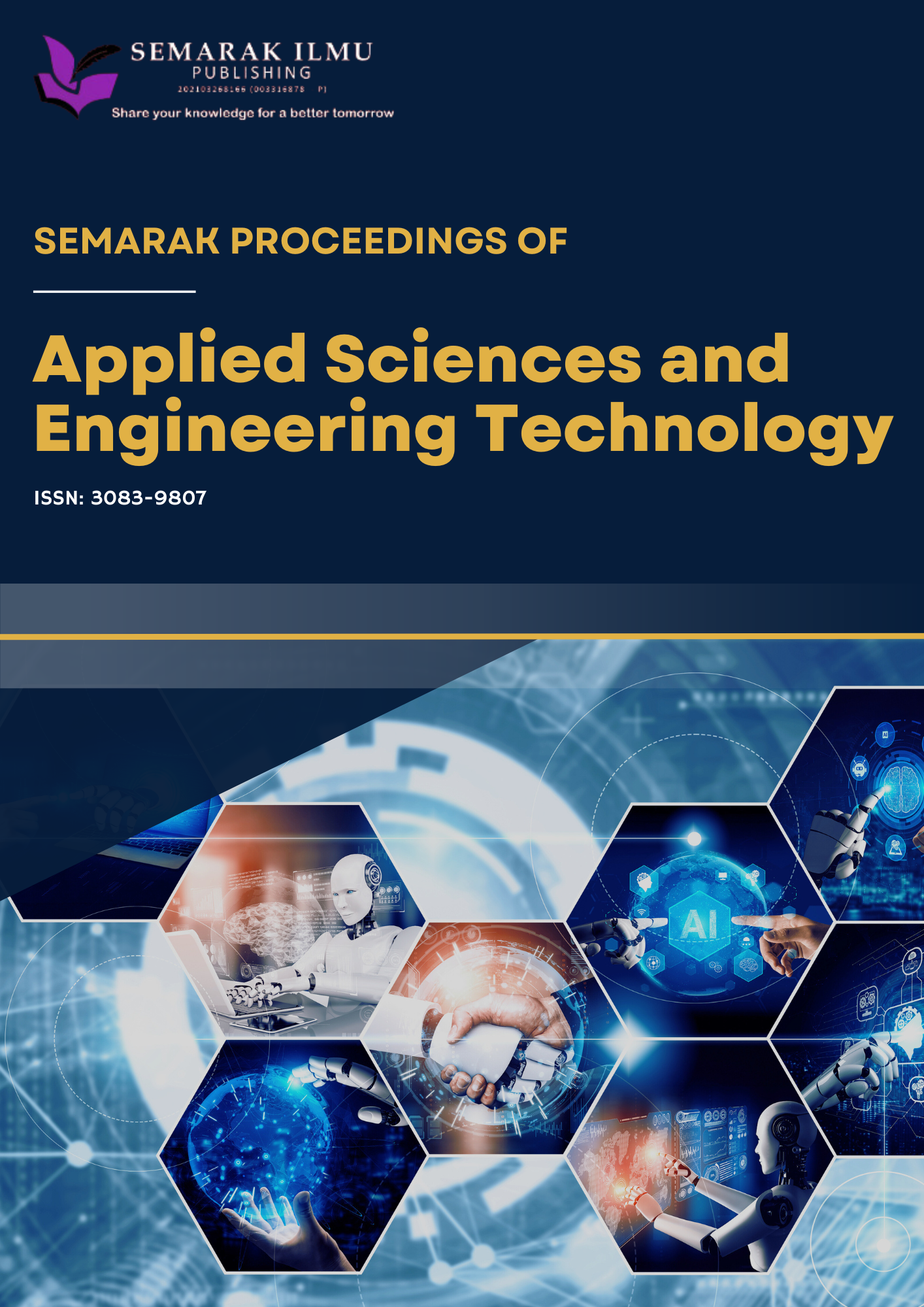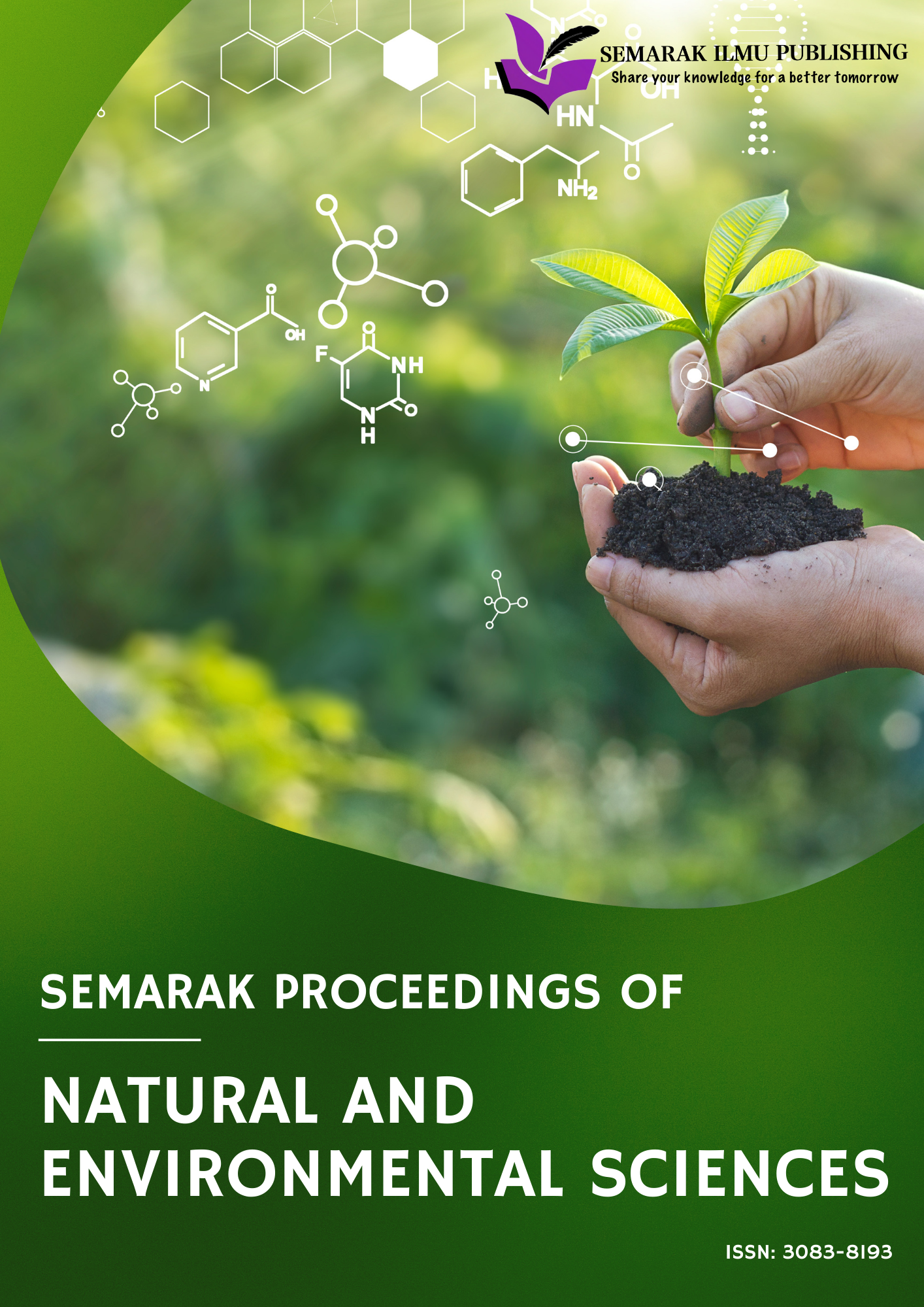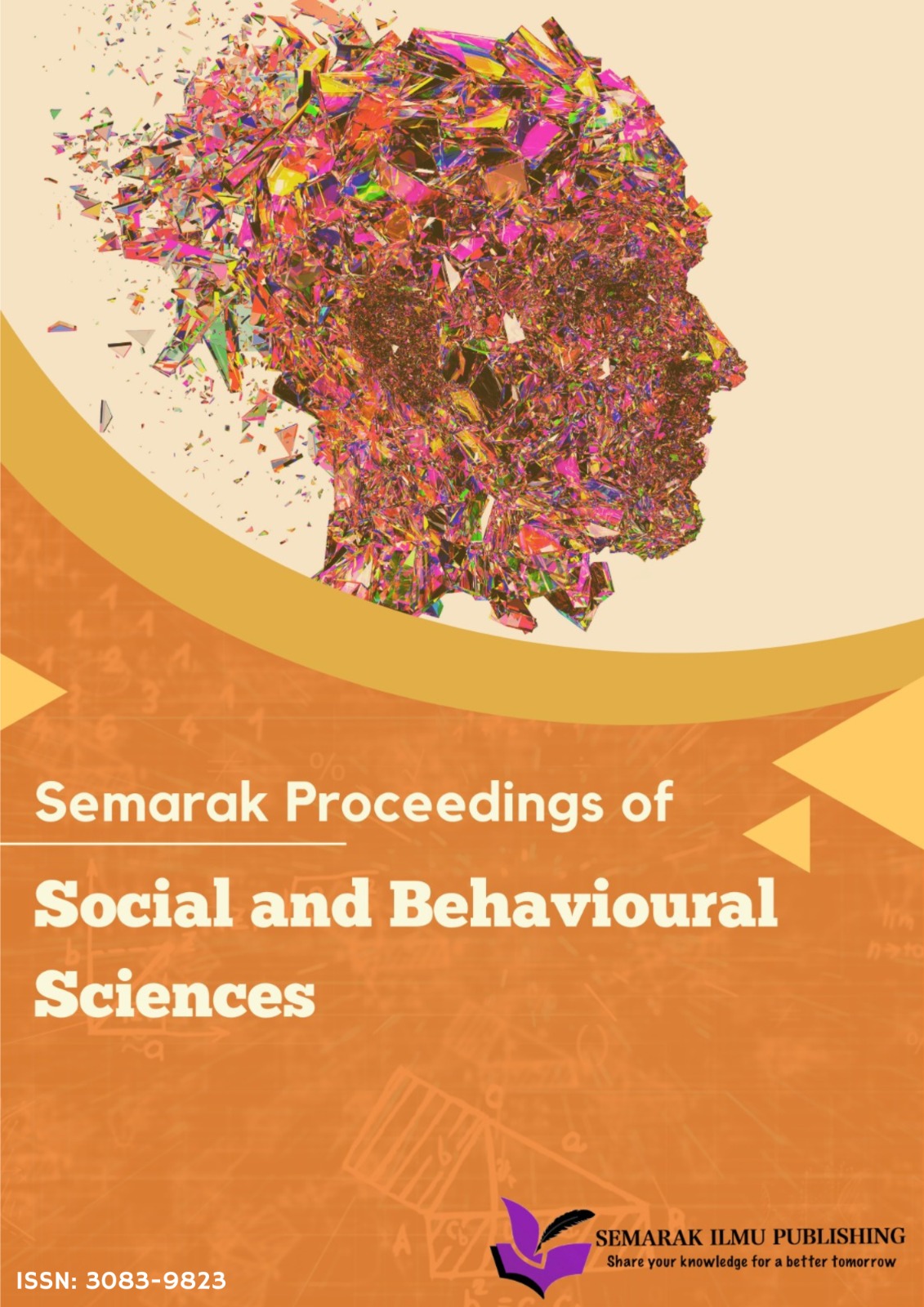Challenges and Opportunities in Revitalizing Colonial Building: Barriers to Adaptive Reuse in Malaysia
DOI:
https://doi.org/10.37934/spaset.1.1.1016aKeywords:
Adaptive reuse, barriers, colonial buildingAbstract
Adaptive reuse of colonial buildings has increased attention as one of the sustainable solutions to preserving architectural heritage buildings while meeting modern needs. However, the implementation of adaptive reuse in Malaysia faces significant obstacles that prohibited the broader implementation of this effort. This study explores the key challenges and opportunities in the adaptive reuse of colonial buildings in Malaysia, drawing on interviews with four professionals from diverse backgrounds, including an architect from the Public Work Department, a conservator and a lecturer in architecture. The findings identified key economic factors, such as the high cost of restoration and the limited profitability of converting buildings into non-commercial spaces like museums and galleries. Additionally, long-term maintenance issues were identified as essential for preventing these buildings from becoming vacant. The study also stresses the fact that government has a responsibility of preserving colonial buildings especially those in its possession and the research finds that there should be sustainable management of colonial buildings. By connecting these findings to existing literature, the paper underscores the need for improved financial support, clearer regulatory frameworks, and stronger public-private partnerships to overcome the barriers to adaptive reuse. The study enriches new insights into the economic feasibility of adaptive reuse and the challenges of long-term building conservation, offering recommendations for policy makers and conservationists.









